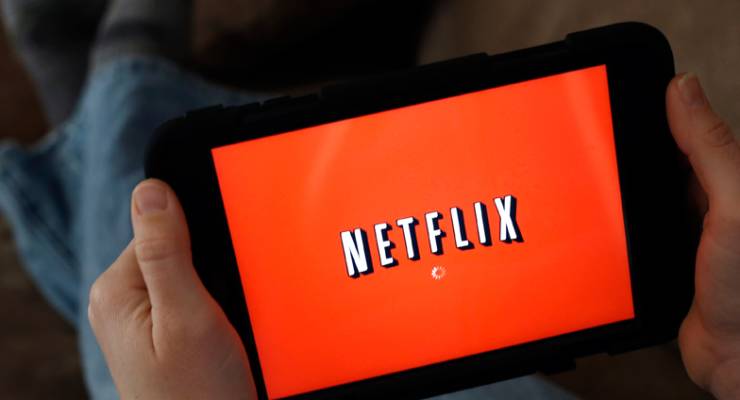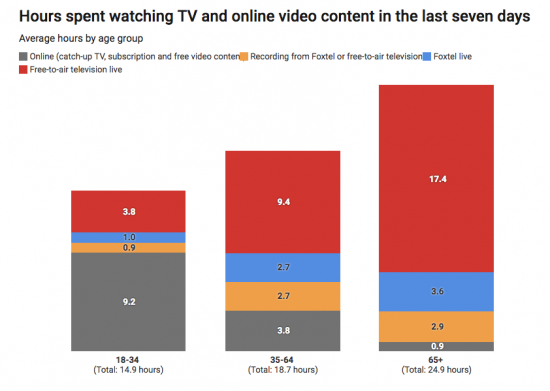
In recent months, the debate about the future shape of Australian culture has spilled out into the open, driven by a concerted campaign by industry groups, including Screen Producers Australia and the Media Entertainment and Arts Alliance, to “make it Australian”.
Australian-made campaigns are nothing new. But the interesting aspect of the current push is that the industry is pressing for more regulation, not more money.
Screen Producers Australia (SPA) is the peak body for the domestic film and television production sector. SPA’s Matthew Deaner says that “reform of the regulatory model” to extend local content obligations to streaming video on demand (SVOD) is “the number one thing” that the industry is seeking.
“It’s about providing a level playing field and opening up opportunities fort the local production sector,” Deaner told Crikey. “There’s an industry capability argument there, you can’t have Australian content without an Australian industry, and vice versa.”
Keeping local screens Australian will be no easy task. The regulatory challenges of a rapidly moving industry are stark.
A good example is streaming video. As Australians lock in for hours of binge watching on Netflix and Stan, streaming video is rapidly becoming the dominant way for Australian audiences to watch movies and TV. That’s leaving the old regulatory system behind.
This graph by the University of Melbourne’s veteran media researcher Denis Muller from ACMA illustrates the issue. As Muller writes, “the trend away from broadcast and towards streaming services is accelerating, especially among younger people”.

Younger audiences are increasingly turning off the TVs, and opening their laptops. Source: Denis Muller, based on ACMA data.
In the past, regulators protected Australian production with local content rules that forced broadcasters to screen a majority of Australian content in prime time. Broadcast television still enjoys a strong regime of local content protection — prime time TV must be 55% local content. (Even if it has been watered down in recent years by the notorious “Kiwi clause”, which allows New Zealand-produced TV to be counted as “Australian” for the purposes of the quota).
In contrast, streaming has no local content regulations whatsoever. The consequences for local producers are potentially dire. While Netflix boasts more than 7 million subscribers, Australian content on the American-owned service is negligible.
How negligible? Perhaps only a few per cent. RMIT research fellow Dr Ramon Lobato has looked at the proportion of local content in a submission to the government’s screen content review. After cataloguing approximately 3000 titles on Netflix and 1000 on Stan, Lobato discovered that Australian content was just 2.5% on Netflix, and 9% on Stan.
“The general trend is pretty clear,” he told Crikey in an email. “Local content makes up a small proportion of the overall content offering on SVOD services in Australia.”
Another crunch point is the problem of how to find Australian content: a dilemma the industry calls “discoverability”.
“Whether or not local content is recommended to users will depend on things like genre, cast, and other users’ viewing behavior,” Lobato explained. “In short, the ‘black box’ of recommendations is very difficult for researchers and policymakers to study.”
Labato adds that “given the market power of Netflix in Australia, I think a quota system of some kind — as per the EU model — is certainly worth considering as part of the regulatory mix.” But, he cautions, “there is a lot of devil in the detail here that we we would need to carefully consider as part of a long-term policy process.”
Deaner points out that European regulators have moved to address the streaming services with new content rules. “In Europe, they have a 30% library quota on SVOD, and they have an expenditure obligation, which is on new content, so that creates commissions,” he pointed out. “The third obligation is promotion, so the SVOD services have an obligation to promote local content, on the landing page.” In contrast, Australia has no local content regulations on streaming video platforms.
The screen producers argue that a 10% local content obligation on streaming services could result in as much as $100 million in new investment into the local sector. “That obligation on Netflix is around the same amount of money that Foxtel spends,” Deaner argued, while cautioning that these are “back of the envelope numbers”.
NEXT: What screen industry players think of streaming quotas, and how the music industry is coping with the exact same dilemma








This is a no-brainer. Of course Netflix and Stan should have a local content quota imposed. It’d be no skin off their nose anyway, just an earmarking of a small percentage of their existing production budgets; but it’d be likely to produce some productions that would play well with their international audience, as well as supporting our screen industry and our culture. It’s win-win really.
What Australian content? You mean more cooking shows? More rubbish reality shows? I can’t remember how long ago it was that Australia produced any worthwhile movies or television.
Leave Netflix and Stan alone. They’re doing alright without adding poor quality Australian productions to their menu.
Let say their is a 10% quota on local content?
What happens when their are 11 countries who set this quota?
Does this mean the streaming company will have to decide not to show part of their library to those countries to get the quota?
Seriously!!!! Who are these people trying to kid??? If the free to air networks don’t have the balls to produce more local scripted content. Why should they expect the multinationals to do it for them?
Let’s not forget the % is achieved by showing kiwi poor I think sit coms ( they may be dramas hard to tell).